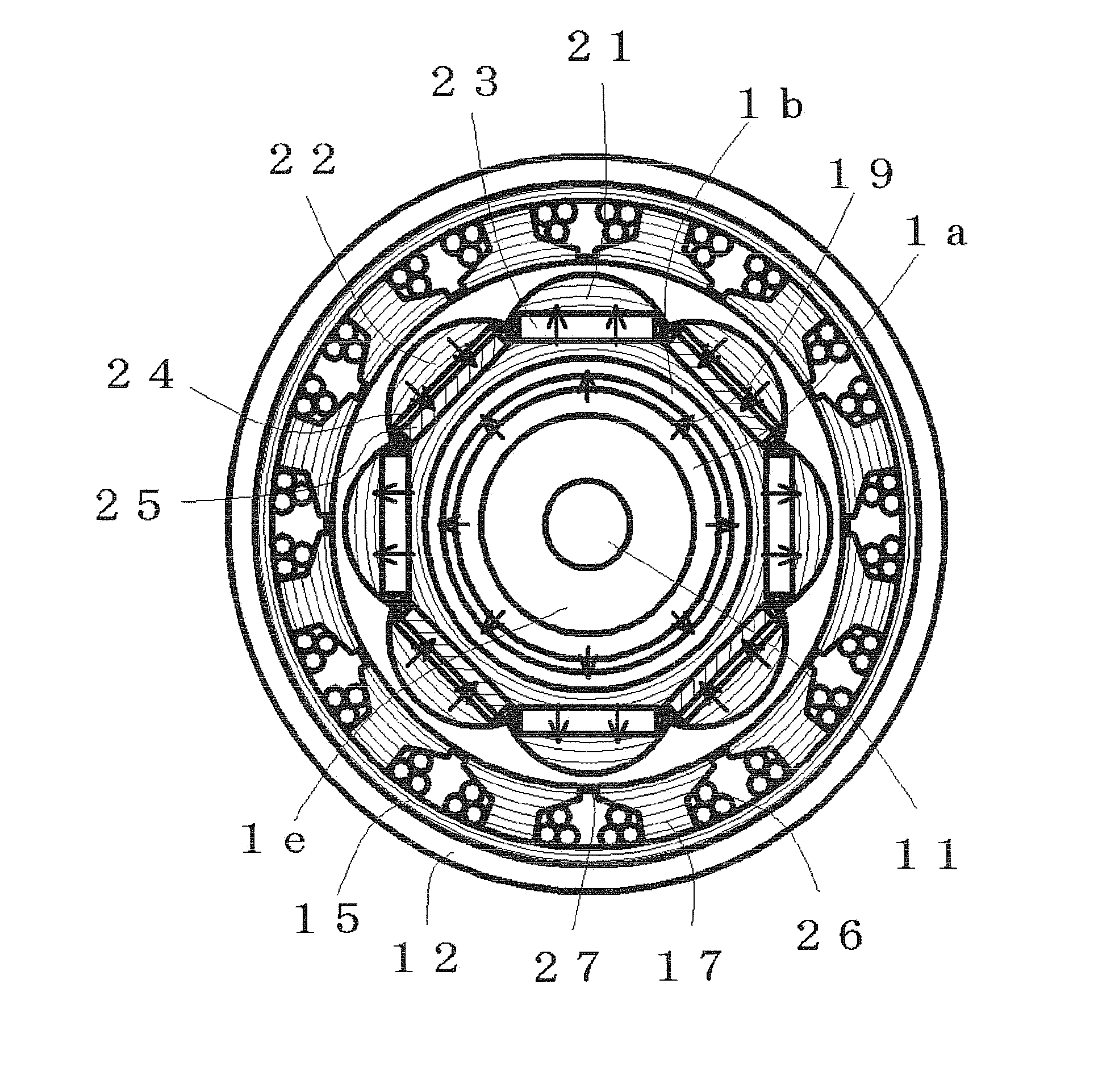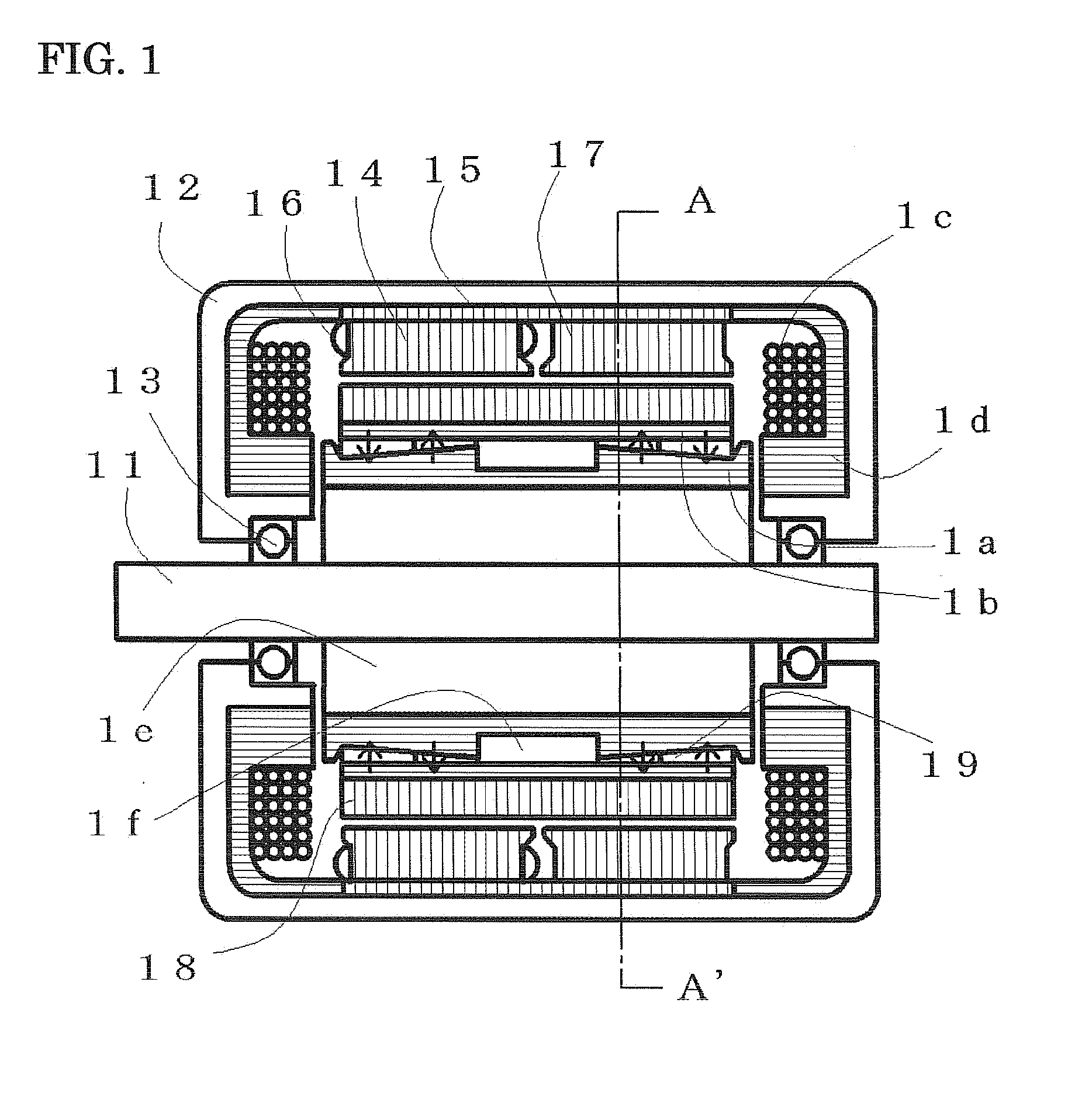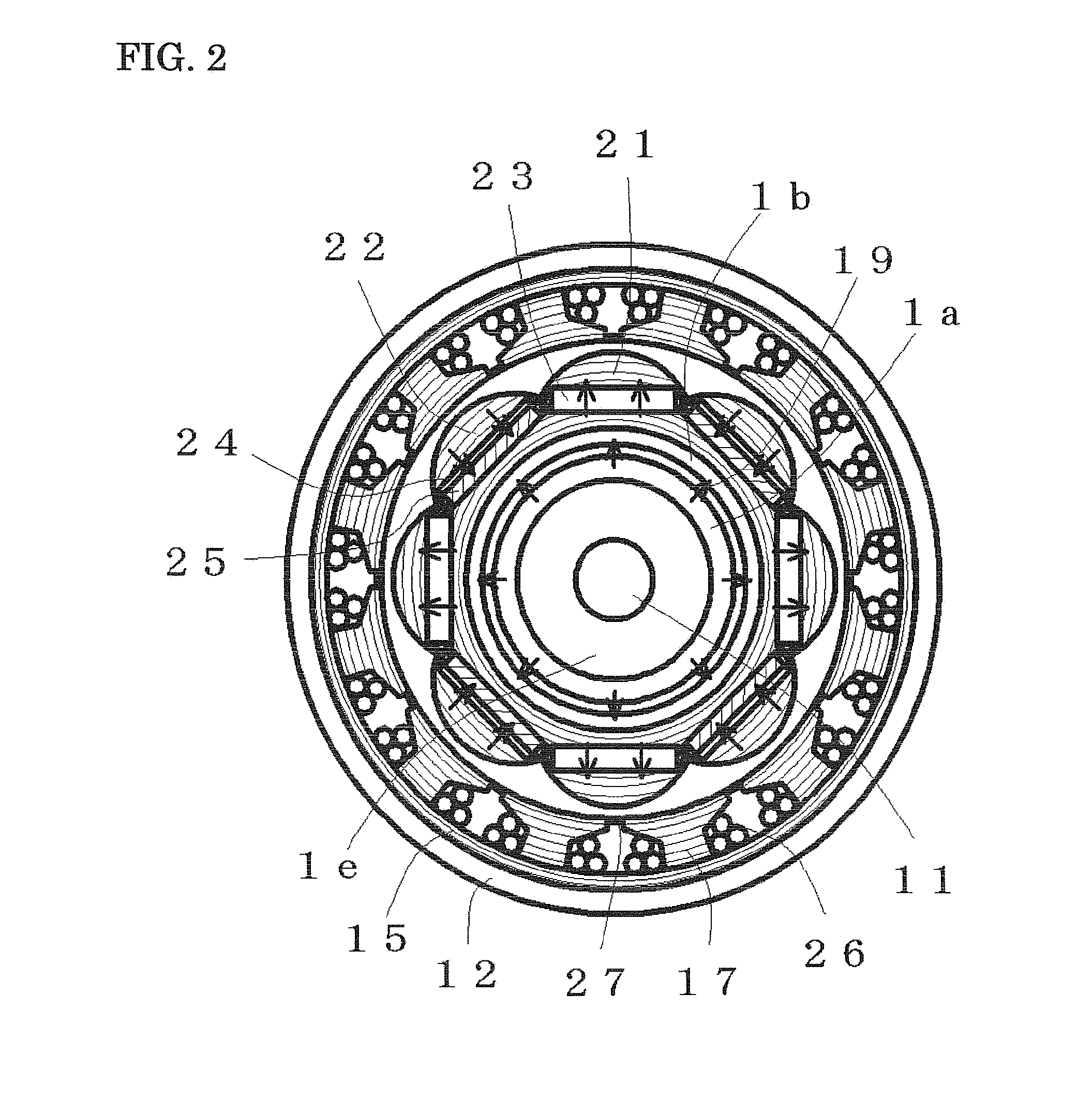Magnetic flux controllable rotating electric machine system
a technology of magnetic flux and rotating electric machines, which is applied in the direction of electronic commutators, dynamo-electric converter control, circuit shape/form/construction, etc., can solve the problems of difficult control of electric motors, high-speed rotational regions, and inability to achieve optimal power in a wide rotational speed range, so as to increase the amount of increase the magnetic flux crossing the armature coil, and increase the magnetic resistance
- Summary
- Abstract
- Description
- Claims
- Application Information
AI Technical Summary
Benefits of technology
Problems solved by technology
Method used
Image
Examples
second embodiment
[0123]FIG. 11 illustrates a sectional view of the armature and the rotor along C-C′ of FIG. 10, and some of component parts are appended with numbers for explaining the reciprocal relation. Since an armature composition is the same as the armature composition of the second embodiment, explanation is omitted. The surface magnetic pole part 102 has composition that the cylindrical magnetic substrate is sectioned by permanent magnet assemblies in a circumferential direction. A combination of an intermediate magnetic salient pole 113 and permanent magnet plates 115, 116 having same magnetization direction disposed at both sides of the intermediate magnetic salient pole 113 serves as the permanent magnet assembly. The surface magnetic pole part 102 is characterized in that a uniform magnetic material is partitioned into the island-shaped magnetic poles 111, the magnetic salient poles 112 by the permanent magnet assemblies in the circumferential direction. And each magnetization direction...
first embodiment
[0149]As mentioned above, the rotating electric machine by this embodiment controls flux amount flowing through the armature by changing magnetization state of the field magnet and also the sub-field magnets. Although, flux amount and direction from the magnetic excitation part are controlled by changing magnetization state of the field magnet 13c, composition of the field magnet 13c is same composition as the Further explanation of flux amount control by the magnetic excitation part will be omitted.
[0150]The rotating electric machine system according to a fifth embodiment of the present invention will be explained by using FIG. 18. The fifth embodiment is a rotating electric machine system that a magnetic excitation part does not have a field magnet and controls flux amount flowing through an armature by an electric current.
[0151]FIG. 18 shows a longitudinal sectional view of a rotating electric machine apparatus that the magnetic excitation part of the fourth embodiment is change...
PUM
 Login to View More
Login to View More Abstract
Description
Claims
Application Information
 Login to View More
Login to View More - R&D
- Intellectual Property
- Life Sciences
- Materials
- Tech Scout
- Unparalleled Data Quality
- Higher Quality Content
- 60% Fewer Hallucinations
Browse by: Latest US Patents, China's latest patents, Technical Efficacy Thesaurus, Application Domain, Technology Topic, Popular Technical Reports.
© 2025 PatSnap. All rights reserved.Legal|Privacy policy|Modern Slavery Act Transparency Statement|Sitemap|About US| Contact US: help@patsnap.com



